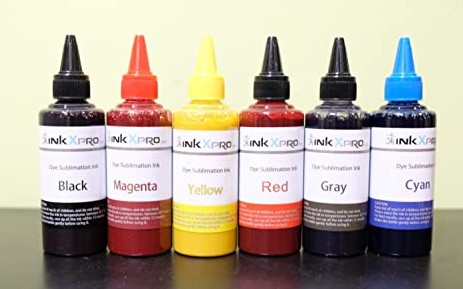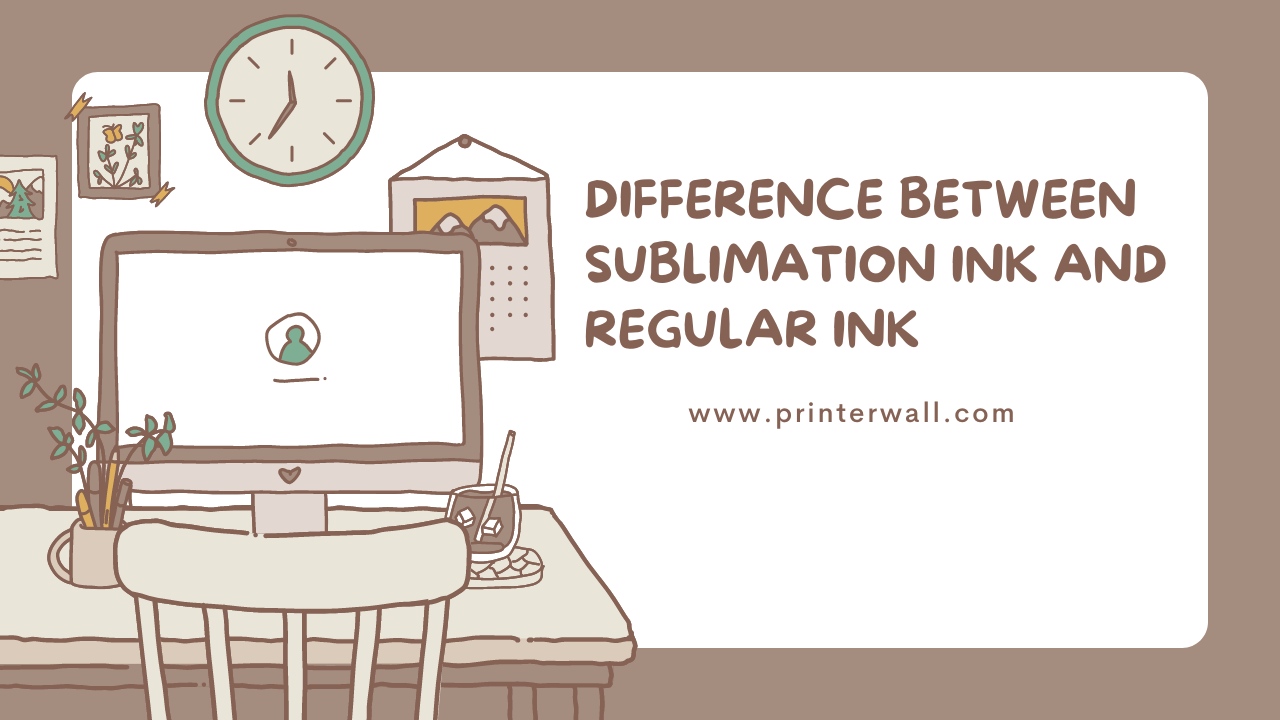If you are looking to print on a variety of surfaces, you may be wondering what type of ink to use. This article will explain the difference between sublimation ink and regular ink and the advantages of each. Sublimation ink is a specialized ink that is designed to produce high-quality prints on a variety of materials. Regular ink, on the other hand, is the most commonly used type of printing ink and is designed for printing on paper. We will discuss the characteristics and benefits of each type of ink and the best uses for each.
What is Sublimation Ink
Sublimation ink is a type of ink used for heat transfer printing. It is designed to work with a variety of substrates such as polyester, nylon, and other synthetic fabrics. The ink is printed onto a transfer paper using a specialized printer, and then the paper is applied to the substrate using a heat press. This transfers the ink from the paper onto the substrate, resulting in a durable, vibrant image.
What is Regular Ink
Regular ink is the conventional type of ink used in printing. It is typically made up of pigments and dyes suspended in a liquid carrier. It is used in a variety of printing processes, including offset printing, flexography, gravure, and digital printing. The ink is printed onto paper or other substrates, resulting in a permanent, high-quality image.
Comparison of Sublimation Ink and Regular Ink
Color
Sublimation ink is a specialized ink that is used to produce vibrant colors and images that are highly resistant to fading. Sublimation ink is able to create incredible rich colors and images that are not achievable with regular ink. Regular ink is limited in its ability to produce colors and images due to the fact that it is not as resistant to fading.
Cost
The cost of sublimation ink is typically more expensive than regular ink, due to its specialized nature. However, the long-term savings that can be achieved by using sublimation ink are often worth the initial cost. Sublimation ink is more expensive to purchase, but it is more cost-effective over time because it is more resistant to fading, which means fewer reprints are required.
Quality
Sublimation ink is superior to regular ink in terms of quality. Sublimation ink is more resistant to fading and produces vibrant colors and images that are highly resistant to fading. Regular ink, on the other hand, is not as resistant to fading and is limited in its ability to produce colors and images.
Advantages and Disadvantages of Sublimation Ink
Advantages of Sublimation Ink

Sublimation ink is a unique type of ink used for printing and transferring images onto a variety of materials, including fabric, glass, metal, and plastic. Sublimation ink is widely used in the printing and graphics industry for its versatility and vibrant colors. The advantages of sublimation ink include its durability and vibrant colors.
Durability
Sublimation ink is designed to be extremely durable, meaning that it retains its vibrancy and resists fading over time. The inks are heat transferable, so the images are embedded into the fabric or other surface, making them highly resistant to scratches or wear and tear. This makes sublimation ink a great choice for printing fabric, as it will remain vibrant and long-lasting even after multiple washes.
Vibrant Colors
Sublimation ink is known for its vibrant colors and strong color saturation. The inks are designed to create a deep, rich color that does not fade or wash away easily. The colors are designed to be bold and vivid, so the images printed with sublimation ink will look bright and eye-catching. The colors are also designed to be resistant to fading from exposure to sunlight, making the images ideal for outdoor use.
Overall, sublimation ink has a number of advantages over other types of inks. It is highly durable, and its colors remain vibrant and true even when exposed to the elements. Additionally, the colors are highly saturated, so the images printed with sublimation ink will have a deep and vivid look. For these reasons, sublimation ink is a popular choice for printing fabric and other materials.
Disadvantages of Sublimation Ink
Sublimation ink is a type of dye-sublimation ink used in a printing process that involves transferring dyes onto various materials. While sublimation ink has many advantages, it also has several drawbacks that must be considered when deciding whether this ink is the right choice for a particular project.
Expensive
One of the main disadvantages of sublimation ink is its cost. Sublimation ink is significantly more expensive than other types of printing inks, such as solvent-based inks and UV-curable inks. In addition, special equipment and supplies, such as sublimation transfer paper, are also required, which can add to the cost.
Complicated to Use
Another disadvantage of sublimation ink is that it can be complicated to use. Sublimation ink must be used in conjunction with a heat press or other special equipment, which can be difficult to operate. In addition, the process of transferring the ink onto a material can be time-consuming and require meticulous attention to detail.
Conclusion
In conclusion, sublimation ink and regular ink are quite different in terms of the technology used to print images and text. Sublimation ink is great for creating vibrant, long-lasting prints on a variety of materials, while regular ink is more limited in its applications. Regular ink is better suited for everyday printing tasks, such as printing documents or photos. However, sublimation ink is more versatile and can be used to create prints that are both durable and aesthetically pleasing. Ultimately, the best ink to use depends on the type of printing task and the materials being used.
Frequently Asked Questions
What is the difference between sublimation ink and regular ink?
Sublimation ink is a specialized type of ink that is used in conjunction with a heat press machine to transfer images onto a variety of materials, including fabric, metal and plastic. Regular ink, on the other hand, is used in inkjet or laser printers to produce images on paper.
Does regular ink fade over time?
Yes, regular ink can fade over time due to exposure to light, heat and other environmental factors.
Is sublimation ink permanent?
Yes, sublimation ink is permanent and will not fade over time.
Can sublimation ink be used on any material?
No, sublimation ink can only be used on materials that are polymer-coated, such as fabric, metal and plastic.
Does sublimation ink require a heat press machine?
Yes, a heat press machine is required to transfer images onto materials using sublimation ink.
